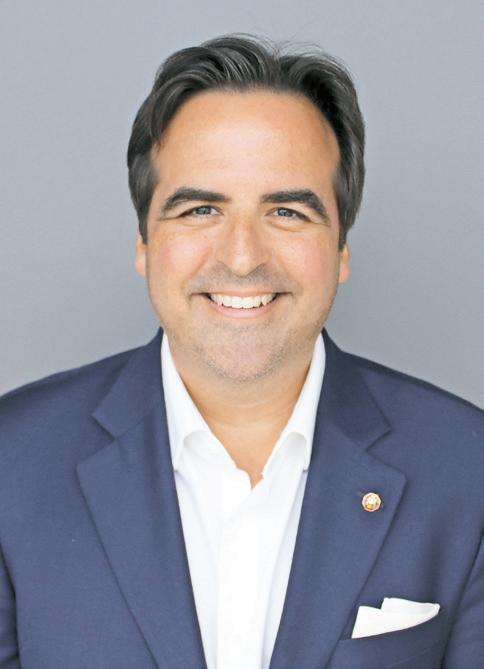
14 minute read
inflation reduction act to Promote friendly future
Ricardo Álvarez-Díaz,
FAIA – Licensed architect and entrepreneur www.advfirm.com The Inflation Reduction Act Promotes Sustainable Design
The Inflation Reduction Act marks a monumental moment in the fight against climate change and its effects on human health and well-being. The Inflation Reduction Act (IRA) of 2022 is a recently approved bill designed to deliver the largest investment in climate action in U.S. history.
Congress has directed nearly $370 billion over the next decade to quickly scale up renewable energy production and drive reductions in greenhouse gas emissions. The historic legislation makes urgent investments to lower healthcare and prescription drug costs, incentivize affordable clean technology energy monitoring and electric vehicle (EVs), to create more opportunities for working families, small businesses, and innovative startups. The IRA will ultimately steer design toward a more environmentally friendly future. The Act has a loan program called the Energy
Infrastructure Reinvestment (EIR) Program to help retool, repower, repurpose, or replace nonoperating and operating energy infrastructures to improve energy efficiency. Eligible projects will require controls or technologies to avoid, reduce, utilize, or sequester air pollutants and greenhouse gas emissions.
This loan incentivizes designers to implement sustainable and efficient solutions in their projects. IRA’s Greenhouse Gas Reduction Fund will help finance clean energy technologies and emission-cutting infrastructure, such as rooftop solar panels. Not only do solar panels reduce our carbon footprint, but they also provide people with reliable energy at a lower cost. This incentive fund encourages designers to include solar panels and other clean energy technologies in their designs. Another way the IRA promotes sustainable design is by creating additional funding for consumer programs. This includes energy-saving systems that help regulate indoor temperatures and improve energy efficiency. This incentivizes designers to add temperatureregulating measures to their projects, such as window films to reduce solar heat from the outside, reduce hot and cold spots inside, and help prevent energy from escaping. Since the Inflation Reduction Act provides incentives to scale up renewable energy production and drives substantial reductions in greenhouse gas emissions, the demand for smart, clean technology will become more prevalent and connected living will become more affordable. Investing in intelligent daylight harvesting systems, water filtration systems, and air purifying technology will allow residents and workers to monitor and save energy. Designers are already interacting more with intelligent technology and identifying new ways to integrate these energy-efficient systems into their designs. The IRA has promoted intelligent, sustainable design with fully connected energy management ecosystems to drive efficiency. People are already beginning to include smart, sustainable technologies as a standard. As a result, the work of design professionals is transforming to meet the growing demand for greener and more connected homes and businesses. The Inflation Reduction Act is a historic step toward a greener future. Its energy-related funding for high-tech solutions incentivizes sustainable practices to fight against climate change. By making clean technology more affordable, people will be able to prioritize residential energy efficiency while designers deliver well-planned, quality projects that integrate smart and sustainable innovations.
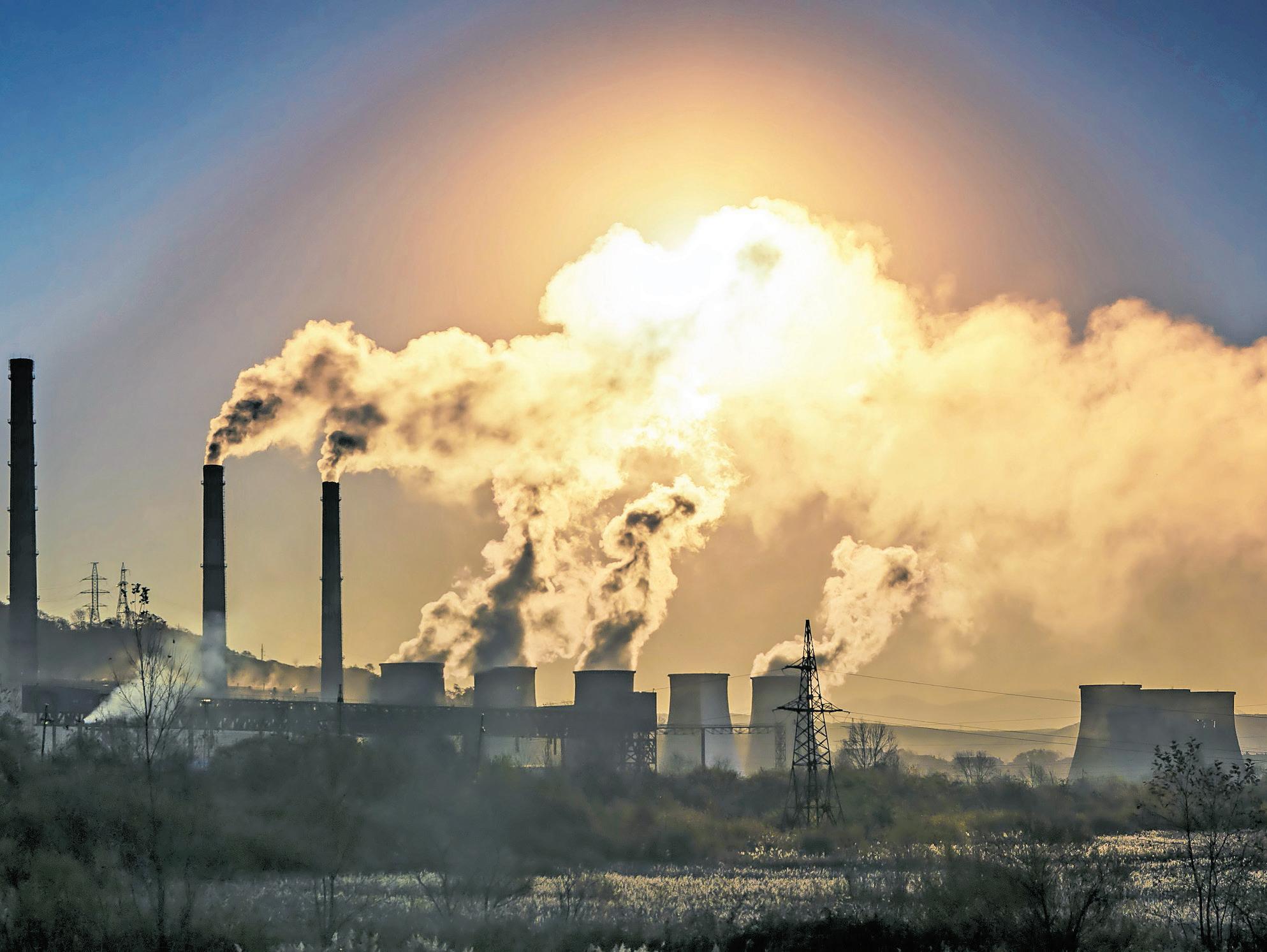
Cuban artists blocked from once-promising NFT trading sites
Megan Janetsky – The Associated Press
HAVANA — When everything seemed to be going wrong, Cuban multimedia artist Alejandro Pablo García Alarcón found a solution in what some might consider an unusual place: NFTs.
Artists like him have been dealt multiple blows in recent years: The pandemic wreaked havoc on Cuba’s tourism sector, sending art sales plummeting. American sanctions, while not explicitly applying to art, made it harder for Cubans to sell their works. And for artists whose work can veer into political commentary, like García Alarcón’s, it can be hard to get featured in Cuban galleries.
NFTs, or nonfungible tokens, are digital images registered on a blockchain and generally purchased with cryptocurrencies. They offer artists such as García Alarcón a rare loophole because they can profit from their art on an international stage with few speech restrictions due to the medium’s decentralized nature. “The first thing that drew me to it was the freedom,” said García Alarcón, known best by his artist name, Paolo De. “You can commercialize your work without intermediaries, without having to pass through a filter.”
But this year, doors have begun to close for artists from Cuba and other countries facing U.S. sanctions because key NFT trading sites have gradually blocked them from doing business on their platforms, often with little or no explanation.
García Alarcón is among at least 30 Cuban artists whose profiles have been delisted from at least two American-owned NFT trading sites, including the largest one, OpenSea, and KnownOrigin, according to Cuban NFT artist collectives.
Neither site responded to an Associated Press email seeking comment.
The delistings have extended to some of the biggest names in the Cuban digital art scene, including Havana’s most popular interactive art space, Fábrica de Arte Cubano, and photographer
Gabriel Guerra Bianchini, the first Cuba resident to auction off a piece as an NFT.
In March 2021, his work “Hotel Habana 3/10,” which features a mix of photos of Havana’s old, classic buildings stacked on top of each other, made a splash in the local art scene. His OpenSea page now reads “404. This page is lost.” On its website, OpenSea boasts that it is “building an open digital economy” and that users can “trade their items freely.” García Alarcón began trading NFTs on OpenSea in April 2021, using his first work as a political commentary on the controversial detention of protesting Cuban artists in January of that year. He earned $200 from it and proceeded to sell around 20 more NFTs through the website. At one point, OpenSea promoted García Alarcón as an artist to watch. But last March, he was suddenly locked out of his account without explanation.
“They sell you the idea of freedom, that you can show your work, that there’s no censorship,” García Alarcón said. “You use the platform to show what you can’t show in your own country, and then this happens.” When an artist is taken off of a platform, the art they sold is also removed from the site. Although the NFT continues to exist on the blockchain and is available to view on other NFT trading sites, artists
In fact,
Key NFT trading sites have gradually blocked Cuban artists from doing business on their platforms, often with little or no say it’s often viewed as a loss by collectors who explanation. are confused or want to display the art on more popular platforms. Although OpenSea hasn’t said why it removed the work of the Cuban artists, it likely has to do with the perceived risks of running afoul of U.S. sanctions. Amid criticism for delisting Iranian artists earlier this year, OpenSea told the crytocurrency news site Decrypt in March: “We have a zero tolerance policy for the use of our services by sanctioned individuals or entities and people located in sanctioned countries.” The costs of violating the sanctions can be steep, as the U.S. Treasury Department fined the cryptocurrency exchange Bittrex $24 million in October for allowing traders to evade American sanctions in places such as Cuba, Syria, Iran and Sudan.
The first thing that drew me to it was the freedom. You can commercialize your work without intermediaries, without having to pass through a filter.
Alejandro Pablo García Alarcón, Cuban artist
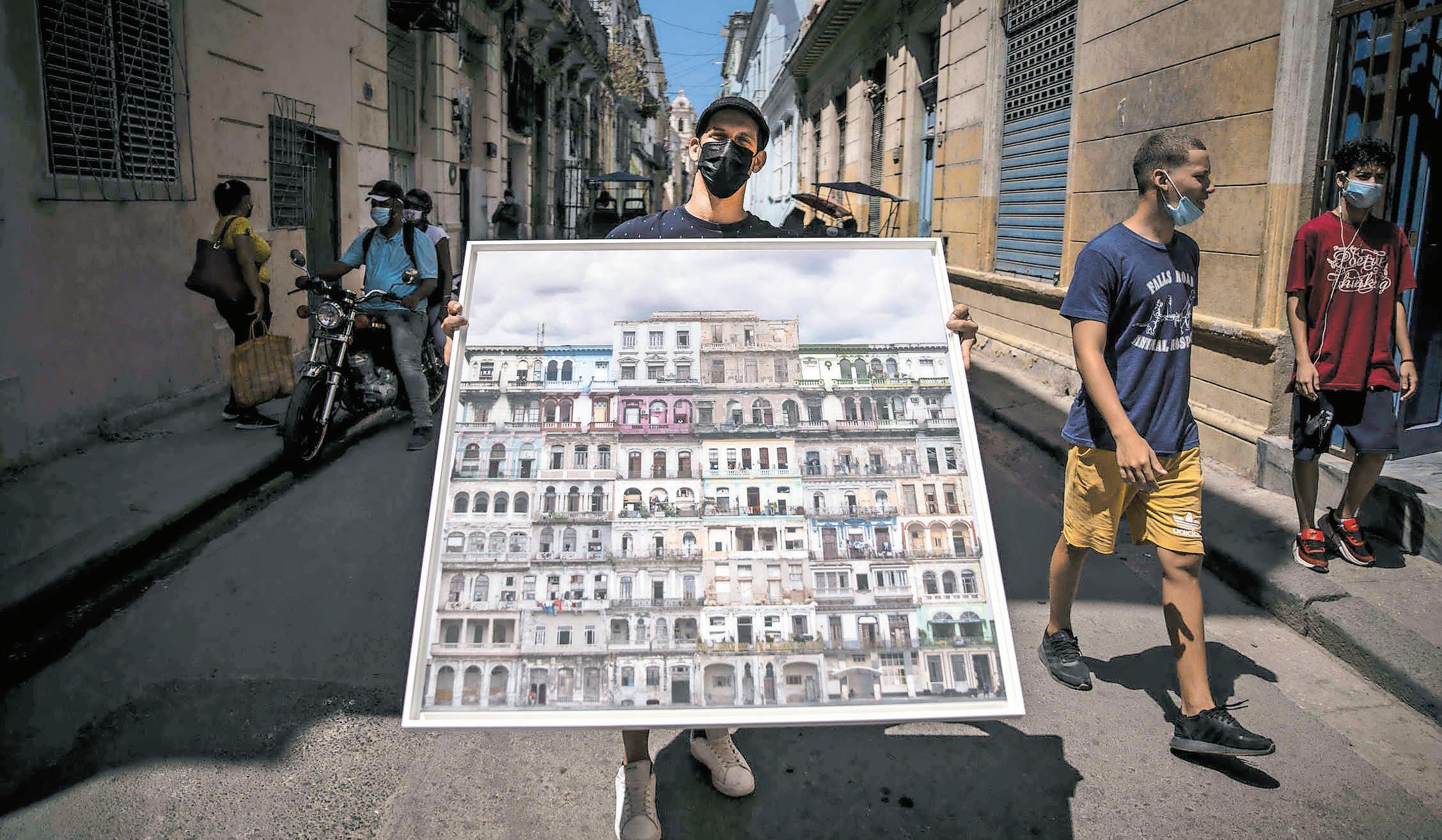
Kevin Erickson walks around his electrified 1972 Plymouth Satellite. > AP Photo/Thomas Peipert
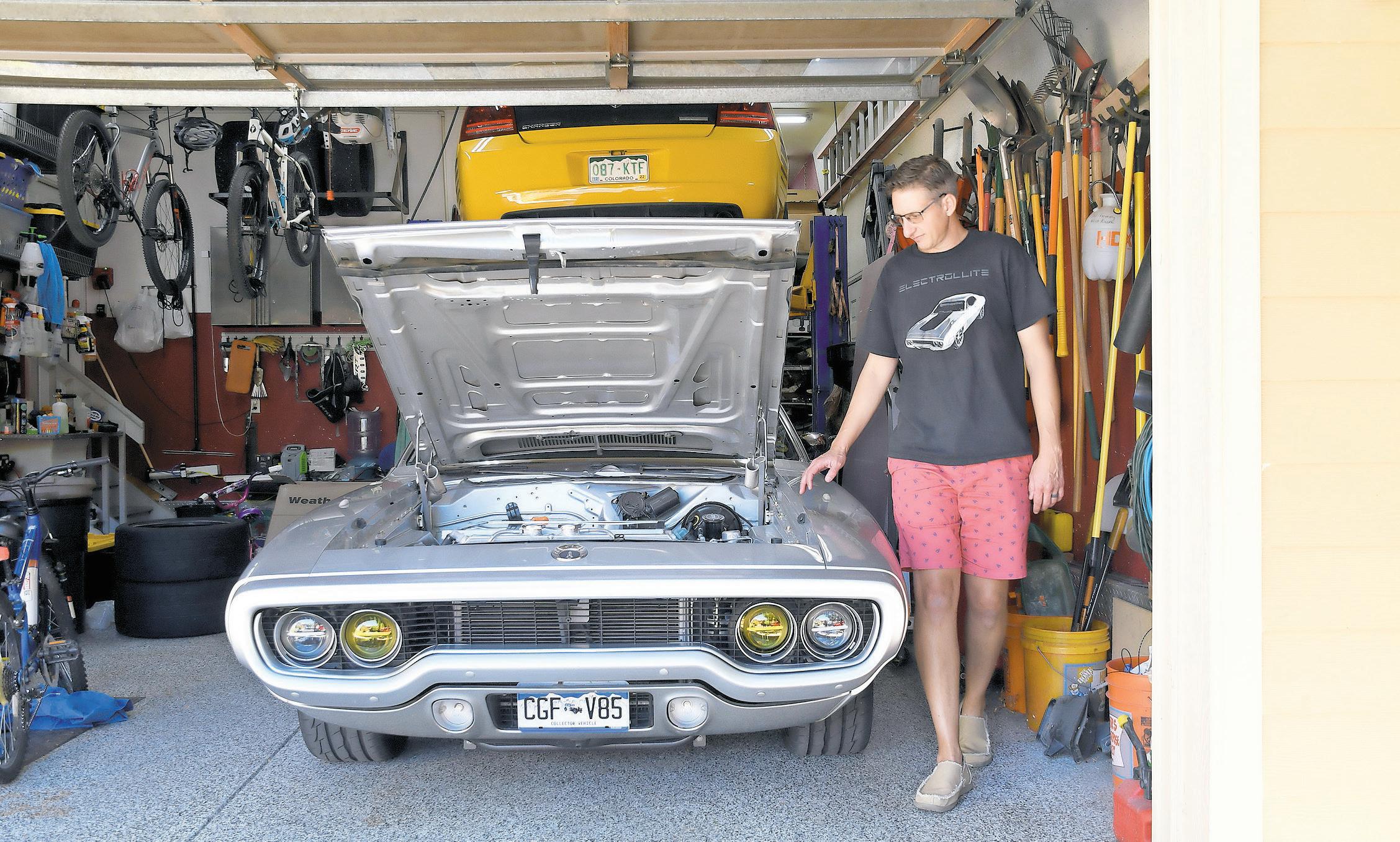
In fact,
Thomas Peipert – The Associated Press
DENVER — When Kevin Erickson fires up his 1972 Plymouth Satellite, a faint hum replaces what is normally the sound of pistons pumping, gas coursing through the carburetor and the low thrum of the exhaust. Even though it’s nearly silent, the classic
American muscle car isn’t broken. It’s electric. Erickson is among a small but expanding group of tinkerers, racers, engineers and entrepreneurs across the country who are converting vintage cars and trucks into greener, and often much faster, electric vehicles. Despite derision from some purists about the converted cars resembling golf carts or remotecontrolled cars, electric powertrain conversions are becoming more mainstream as battery technology advances and the world turns toward cleaner energy to combat climate change. “RC cars are fast, so that’s kind of a compliment really,” said Erickson, whose renamed “Electrollite” accelerates to 0-60 mph (0-97 kph) in three seconds and tops out at about 155 mph (249 kph).
It also invites curious stares at public charging stations, which are becoming increasingly common across the country. At the end of 2019, Erickson, a cargo pilot who lives in suburban Denver, bought the car for $6,500. He then embarked on a year-anda-half-long project to convert the car into a 636-horsepower electric vehicle (475 kW), using battery packs, a motor and the entire rear subframe from a crashed Tesla Model S. “This was my way of taking the car that I like — my favorite body — and then taking the modern technology and performance, and mixing them together,” said Erickson, who has put about $60,000 into the project. Jonathan Klinger, vice president of car culture for Hagerty Insurance, which specializes in collector vehicles, said converting classic cars into EVs is “definitely a trend,” although research on the practice is limited. In May, the Michigan-based company conducted a web-based survey of about 25,000 self-identified automobile enthusiasts in the United States, Canada and the United Kingdom. About 1% had either partially or fully converted their classic to run on some sort of electrified drivetrain. The respondents’ top three reasons for converting their vehicles were for faster acceleration and improved performance, for a fun and challenging project, and because of environmental and emissions concerns. About 25% of respondents said they approve of classic vehicles being partially or fully converted to EVs. “Electric vehicles deliver some pretty astonishing performance just by the nature of the mechanics of how they work,” Klinger said. So it’s not surprising to him that a small percentage of people converting classic cars to EVs are interested in improving performance. He compared the current trend to the hot-rod movement of the 1950s. But Klinger, who owns several vintage vehicles, said he doesn’t think electric motors will replace all internal combustion engines — especially when considering historically significant vehicles. “There’s something satisfying about having a vintage car that has a carburetor,” he said, because it’s the same as when the car was new. Some enthusiasts want to preserve the sound and rumble of older cars’ original engines. Other barriers to converting cars include the knowledge it takes to delve into such a complicated project, as well as safety concerns about tinkering with high-voltage components, the availability of parts, and the time it takes to realize a positive, environmental impact. Because classic vehicles are driven for fewer than 1,500 miles (2,414 kilometers) a year on average, it takes longer to offset the initial carbon footprint of manufacturing the batteries, Klinger said. And then there’s the price. Although Ford and General Motors have or are planning to produce standalone electric “crate” motors that are marketed to classic vehicle owners, Moudry says it’s still not realistic for a casual car tinkerer to have the resources to take on such a complicated project. Because of this, he thinks it will take a while for EV conversions to become mainstream. “I think it’s going to be 20 years,” he said. “It’s going to be a 20-year run before you go to a car show and 50 to 60% of the cars are running some variant of an electric motor in it.”
-Kevin Erickson, classic car owner
Holiday advice for home
bartenders, plus 3 festive cocktails
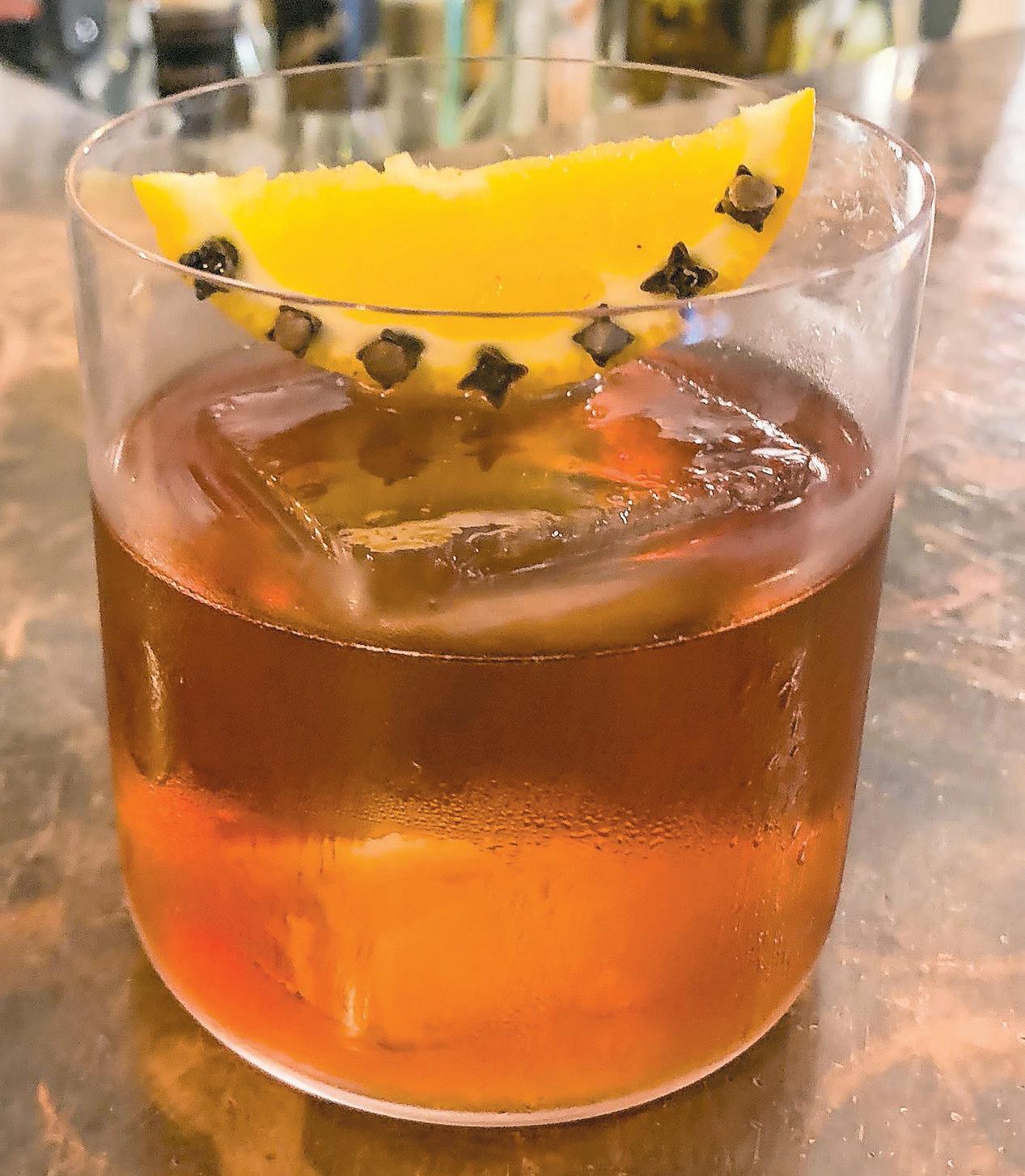
The glass is like the canvas of the drink and ice is like the heat for cooking
Louise Dixon – The Associated Press
LONDON (AP) — Looking to create a bit of winter luxury when tending bar at home this holiday season? London’s top cocktail-makers have some tips.
“Christmas is a special time when you want to join with friends and family. And sometimes, the centerpiece of any happiness is to have a good drink,” says Salvatore Calabrese, an Italian-born drinks expert and author who has been making cocktails at top hotels, bars and private clubs for over 40 years.
Currently at the cocktail bar Velvet, at London’s five-star Corinthia hotel, Calabrese goes by the nickname “The Maestro.”
And The Maestro’s advice?
First, choose the right glassware.
“The glass is the star. It’s the canvas of the drink,” he says. So if it looks elegant, things already feel festive.
Next, think about the quality of the ice and how it dilutes the drink.
“Remember, ice is like the heat for the chef when he is cooking,” Calabrese says.
Cracked ice cubes that disintegrate in your palm are a no-go, as is crushed ice for Christmas. “It’s not a Tiki night,” he jokes. “It is about an elegant night, so make the effort and maybe you can make your own homemade ice.”
Also, he advises, plan. Even prepare your cocktail in advance. Especially when a drink is a little complicated.
“Put it in the freezer or in the fridge, so it’s nice and cold, so the only thing you have to do is to put it in a mixing glass or, to show off, put it in the shaker and shake,” Calabrese says.
Jake Burger, co-owner of The Distillery, a 19th century pub and gin distillery in London’s Notting Hill neighborhood, says that knowing when to shake and when to stir is something a lot of home mixologists get wrong.
“It’s fun using a cocktail shaker, so people think we should shake everything,” he jokes. But it’s only really needed when using fruit juices, egg whites or cream, he says. Otherwise, stirring is best.
“As a general rule, if all the ingredients are alcoholic, you probably don’t need to shake it,” says Burger. “So as an Englishman, it pains me to say it, but James Bond got it wrong. A martini should definitely be stirred, not shaken.”
Liana Oster, bar director at The NoMad Hotel London, suggests adding some seasonal luxury by decorating your glasses. She creates a peppermintbark paint by melting equal parts cacao butter and white chocolate, with a few drops of peppermint essence added in. She then paints a swirl on one side of a cold glass, sprinkles some crushed-up candy cane on it, and then places it in the fridge until needed. “Just make a little effort,” Calabrese sums up, “because really, a great cocktail is a great journey from the beginning.
“And when you taste something nice and delicious, the world seems to be a better place.”
Three cocktail recipes:
WINTERTIME NEGRONI, from The Distillery
1 ounce London Dry Gin 1 ounce Campari 0.5 ounces sweet vermouth 0.5 ounces sloe gin
Mix ingredients together over ice and stir. Serve over fresh ice and garnish with an orange wedge studded with cloves.
Salvatore Calabrese, drinks expert at Velvet cocktail bar, at London’s
0.75 ounces simple syrup 0.75 ounces lemon juice 2 ounces Irish whiskey
Pour the egg white into the larger tin of your shaker, and the simple syrup and lemon juice into the smaller tin. Dry shake together in the shaker to emulsify the egg and the alcohol.
Then hard shake with ice and pour over a strainer into your glass.
Add 0.75 ounces mulled wine slowly into the corner of the glass, and then sprinkle edible gold dust over the half of the surface to cover and garnish.
TRUFFLE SAZERAC, from Velvet, at Corinthia London
0.8 ounces Bourbon 1 ounce Cognac Homemade truffle syrup (you can make your own by heating a few drops of truffle oil with a teaspoon of sugar)
A few drops of orange bitters
Mix ingredients together over ice and stir. Serve over fresh ice and garnish with a slice of fresh truffle.



